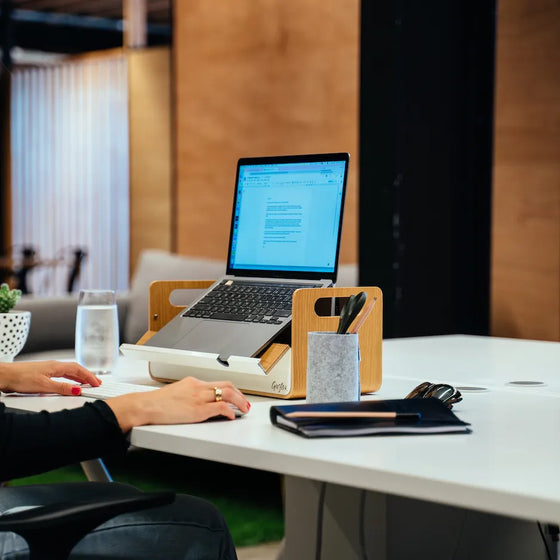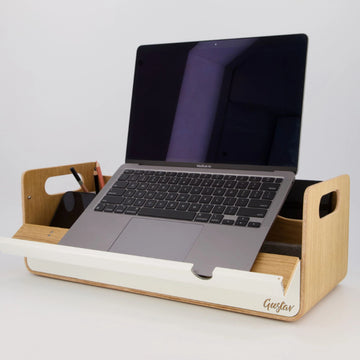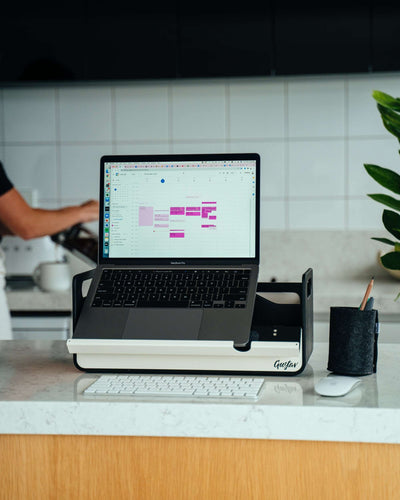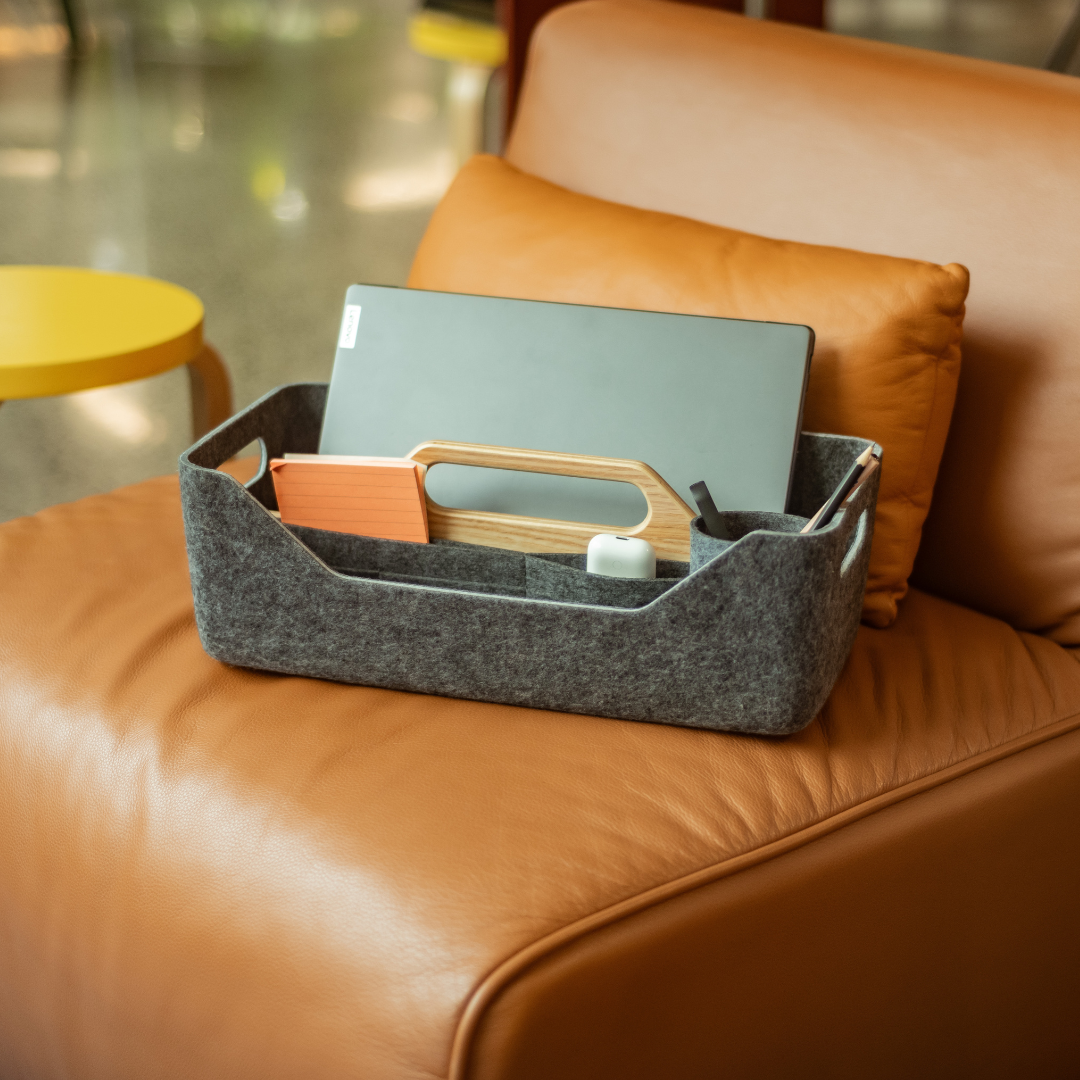Is hot-desking the future of work?

For companies like Google or Deloitte, the fixed workplace is a concept of the past. Hot-desking is the name of the game - but what do hot desks have to do with flexible working and innovation?
Hot, Hotter, Hot Desking
Hot-desking is a concept of office organisation that makes the classic fixed workstation obsolete. Employees choose a new desk space every day or share a space at different times.
Where does hot-desking come from?
The idea is no longer entirely new; modern working environments with desk sharing already emerged in the late 1980s in Silicon Valley. Large tech companies such as Google and Facebook are pioneers here, but hot-desking has become widespread in various industries with increasing digitalisation.
Incidentally, the term has its roots in shipping: sailors in the US Navy shared sleeping berths in "hot bunking" - while one worked, the other kept the bunk "warm".
New ways of working and flexible working
Hot-desking has become increasingly popular in recent years as the work has become more flexible with new time models, digital networking and mobile working. Young employees have little use for classic "9 to 5" working or cubicle offices with fixed workplaces; time- and location-independent working is becoming normal.
To share or not to share? The advantages and disadvantages for companies
Hot-desking has been the norm for freelancers and start-ups, but companies and large corporations are also taking up the trend. But what are the advantages and disadvantages?
Pro: Modern, productive and cheap
- Cost savings
Since there are usually fewer workstations than employees in hot-desking, companies can save up to 30 % on room rent, heating costs and equipment maintenance.
- Efficiency and growth
Studies show that autonomous time management and an on-demand workspace contribute to greater employee productivity. In addition, freelancers and outsiders can be more easily integrated into the team.
- Better communication and motivation
Hot desking brings variety into the office and promotes communication between different departments. Especially when the management level also mingles with the employees, the classic hierarchies are softened, and a feeling of togetherness is created.
- Modern Employer Branding
When competing for qualified workers and young talent, a concept like hot desking becomes the flagship of an innovative, modern employer.
Cons: Stressful, impersonal, isolated
- Declining productivity
The daily search for a workstation, the assembly and disassembly of the necessary equipment and the lack of storage space can cost time. People changing the seat next to you and the ambient noise can also impact productivity.
- Less individuality
The family photo at the desk, the calendar on the wall, the perfectly adjusted office chair - all these personalisations are omitted with hot desking. People might feel that one's individuality and personal needs have no room. Motivation and loyalty suffer in the long run.
- Team spirit and communication are lost
Sitting together in teams generally promotes communication. However, the constant change of people sitting next to each other means that there is no time for a more intensive exchange, affecting the entire community.
Prerequisites for hot-desking
Whether hot-desking ultimately brings more advantages or disadvantages for a company depends very much on the preparation and design of the office.
A digital work platform is necessary. Every employee can log in via a cloud client and access the company network with necessary data and programmes. Company mobile phones can also use this technology.
Know-how and change management
Hot-desking works well depending on a company's culture and communication. When hot-desking is newly introduced, it is particularly important to involve staff in the process, for example, through training and feedback loops.
Hot-desk best practice includes a clean desk policy, i.e. leaving a clean and empty workplace. You should also agree on rules around hygiene, eating at the desk, data protection, etc.
Office space and community
Hot-desking turns classic office space concepts upside down and demands new, creative solutions. The boss's corner office or labyrinths of corridors and partitions are a thing of the past. Everyone works at eye level in open, transparent rooms with workplaces of equal value.
Storage facilities for personal belongings should be provided - for example, in the form of lockers or mobile desk caddies such as Gustav, which helps set up a workspace in a matter of seconds.
Saving individual office space also frees up more space for dedicated and communal areas, such as community lounges, kitchen and cafeteria, conference zones, telephone boxes and rest niches.
Hot-desking in use: best practice examples
At Google, hot-desking is practised today alongside other forms of work such as hybrid working, remote working, think tanks, etc. The company has its desk-booking software. Its desk booking software provides an overview. A prototype for hot-desking of the future was recently presented: Tables and chairs that automatically adapt to the user's personal needs after logging in.
Deloitte moved into "The Edge" in Amsterdam in 2015, reportedly the greenest and smartest office building globally. There are only 1,000 workstations for around 2,500 employees here, and an in-house app independently searches for and books a hot-desk when entering the building. At the Erste Bank Campus in Vienna, the staff was involved in planning the hot-desk systems from the beginning, with tests and model offices allowing their feedback to flow directly into the design.
Small and medium-sized enterprises are already benefiting from hot-desking. Threadless in Chicago operates an interactive design community, where flexible desk sharing promotes creative exchange and new collaborations. WeWork, headquartered in New York, specialises in offering hip co-working spaces and hot desk solutions for freelancers and corporate teams of up to 100 people.
Is there a future for hot-desking?
Hot-desking has emerged as a response to new working conditions and societal changes. In the future, companies will continue to need cost-effective and innovative space solutions, and employees appreciate flexible workplaces even more since the pandemic.
Globally, companies have shown that hot-desking is adaptable - the concept is most successful when it is available for employees to choose from alongside other forms of work such as the home office or hybrid work. An office building becomes its village with "work neighbourhoods" for collaboration, concentrated work, resting, presenting and networking.
Companies have to think of new measures to promote individuality and team spirit - and must not forget the person's individuality. With Gustav, this is easy. After all, the desk caddy can be easily personalised and adapted to each individual's needs. It is the first portable office toolbox that combines ergonomic working and individual workplace design.









